Focused & open for business: UK viewing facilities team up
A number of UK based Viewing Facilities have collaborated to create the Viewing Facilities Action Group (VFAG) to enable best practice and guidance during the pandemic restrictions. With facilities now welcoming clients and participants to their venues, James Endersby caught up with Bob Qureshi of i-view who helped kick start VFAG to hear about the initiative, and feedback from the member facilities.
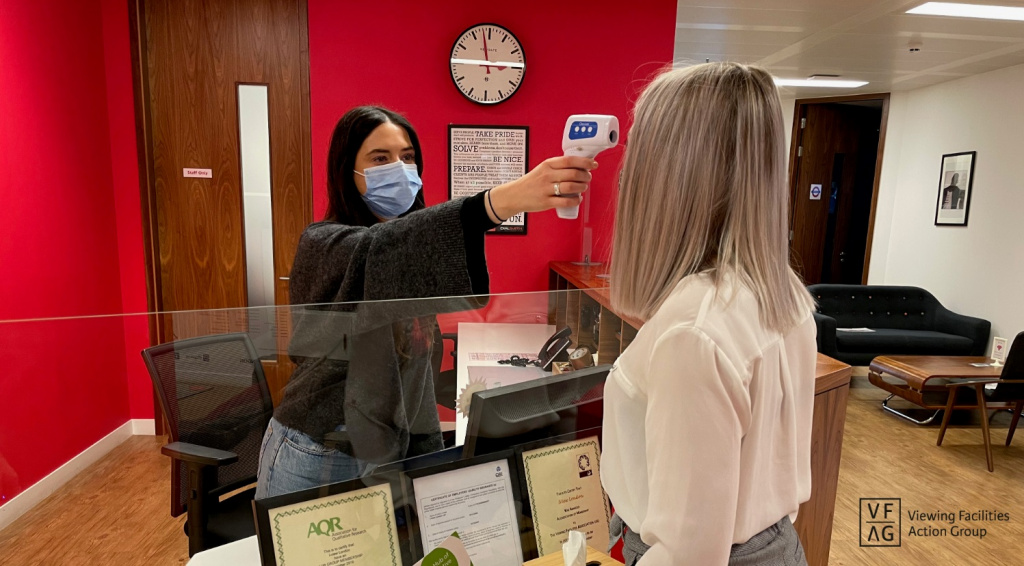
So Bob, how has the Viewing Facilities Action Group (VFAG) experience been?
Let me start by saying, the collaborative approach has been phenomenal by all the viewing facilities involved. Let’s be sure to mention them all as they have all helped in pulling the roadmap and guidance and direction signs together. We have all created key tasks and created a marketing taskforce to help disseminate the correct information as well a consistent message keeping in step with government guidelines.
And what has the reaction been like on opening back up by clients and moderators?
Both have been very excited by a return to F2F. While other methods have their plus points there is nothing that beats interacting on a human level. It is this interaction between people and the exercises that can be used in a face to face setting that everyone we have been talking to is excited by. Undoubtedly face to face also provides a much more in depth reaction to stimulus whether that is physically handling stimulus or just being in the shared space to experience reactions.
Clients specifically have talked about the conversations that happen behind the mirror that are triggered by the viewing experience that are more organic and immediate than when viewing remotely irrespective of any technical wizardry designed to help.
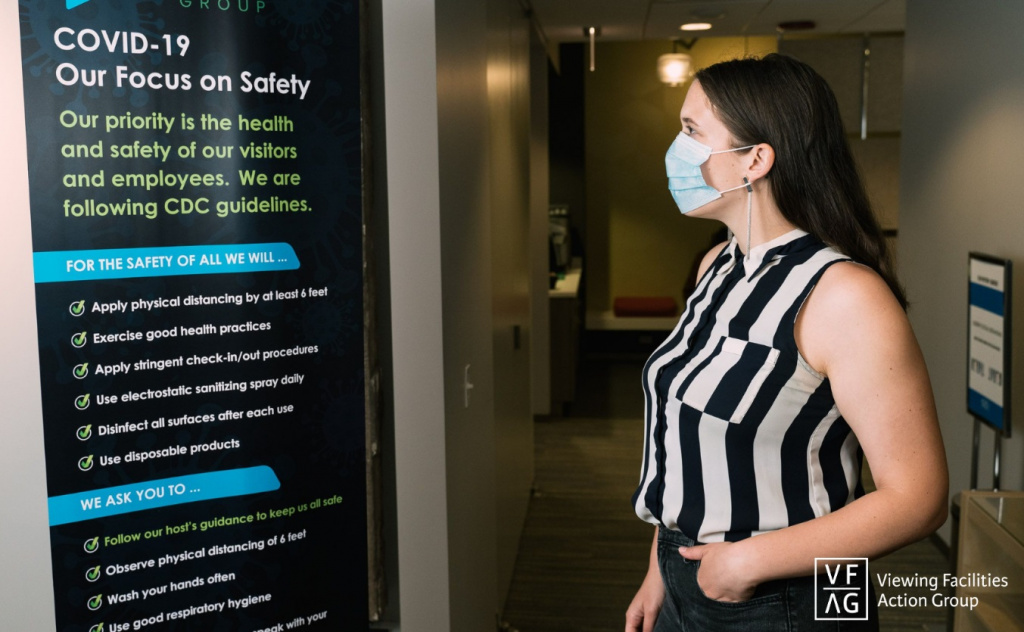
How have participants reacted to coming along?
Attendance has been 100%! Respondents are very pleased to come along, they are happy to take part and speak about something they have an interest in and participate with renewed enthusiasm. In terms of Covid they are used to protocols such as masks in communal areas and having their temperature checked.
How have practitioners adapted to the new way of working in facilities?
Initial reservations about using facilities are quickly alleviated when they see how facilities have been set up. In depth guidelines along with clear explanations of measures in place put minds at ease. Clear signage, availability of PPE and clear systems in place ensure the research itself becomes the focus and people settle into that routine very quickly.
The Viewing Facilities Action Group working with the Viewing Facilities Association and the MRS have set in motion standardised procedures for the benefit of all.
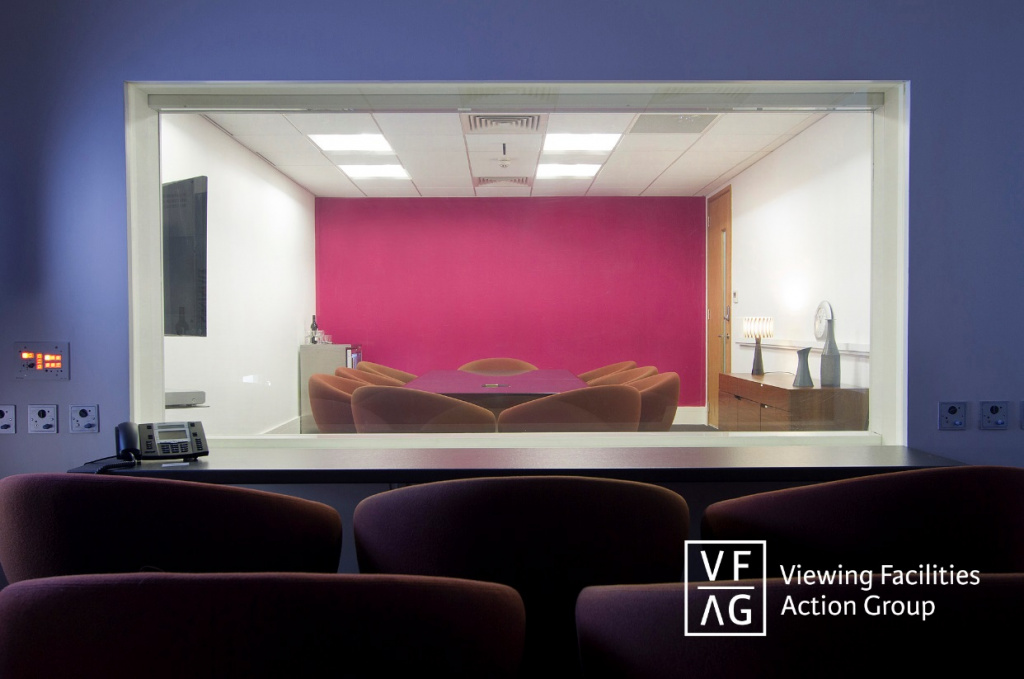
What steps have you all taken to ensure safety?
The most important thing has been to ensure that we maintain the look and feel of a viewing facility, so the research activity takes pride of place. While all Covid measures have been satisfied, they have been done in such a way that they are clear and obvious but once the research is underway the facilities and its uses become the focus. Specifically, all facilities have adhered to both government and MRS guidelines with provision of – Screens, PPE, signage, entry and exit measures, socially distanced spaces, temperature checks and testing where required.
How long do you think it will take for viewing facilities sector to recover?
Although it will take time to recover there are some green shoots already. As lockdown restrictions ease and society itself returns to normal there should be an equivalent reaction in F2F research. For the moment it is up to viewing facilities to remind clients and researchers of the benefit of F2F research while ensuring all measures are in place to boost confidence that a viewing facility is the best environment to reach your customer/consumer.
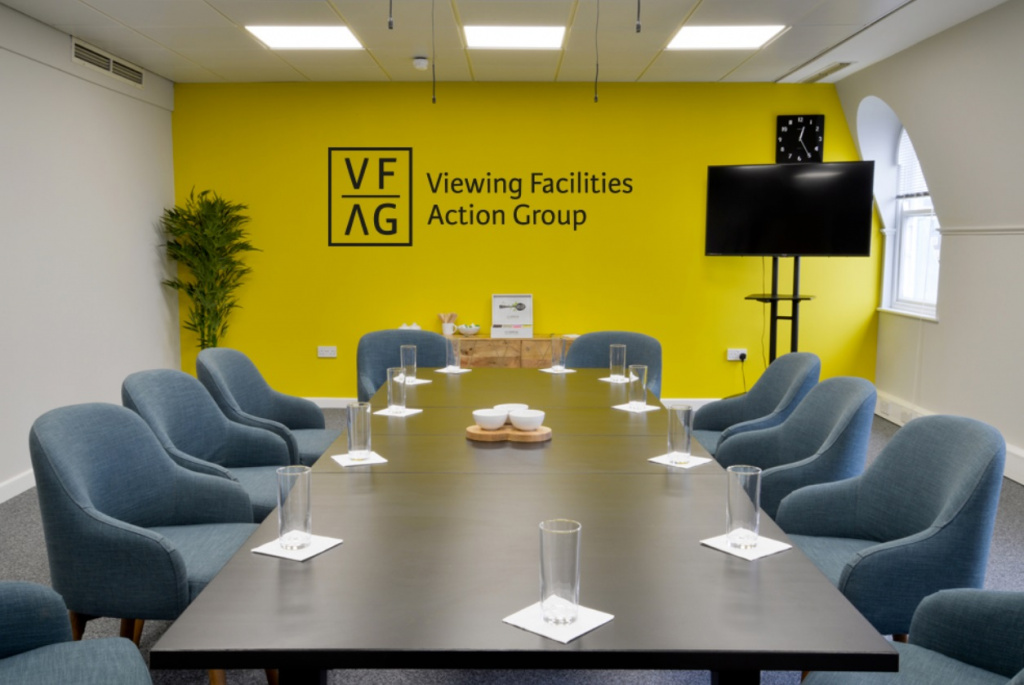
What have you been doing to prepare opening your facilities to the public and to your clients?
Viewing facilities up and down the country are very fortunate in that we have strong support from our industry bodies like the MRS, in particular, who at all times have been an invaluable resource – not only providing us with information on best practice but also advocating for some of us with local governments, especially the DCMS.
Because of this we were well prepared for people coming into our venues and, in fact, hadn’t actually stopped as we had clients who needed to continue conducting essential research which was healthcare related – often specific to the Pandemic.
The public and our industry clients can be assured that our venues are well-equipped to welcome more back into our viewing facilities with hand sanitising stations, additional screening for face-to-face, including PPE, and all, are also operating a one-way system through their buildings to ensure no two people cross paths unnecessarily.
What has the response from the public been like?
At some viewing facilities they were conducting essential research for healthcare related projects throughout the various lockdowns. That meant there was a significant amount of work they had to do; not just in terms of arranging the logistics to create a Covid-safe environment, but also in earning the trust of people they were inviting into their venue.
Thankfully the combination of preparation, industry guidance and frank and transparent advice to all visitors meant that facilities regularly saw higher turn-out rates than they had for consumer research in pre-Covid times. Not only were people happy to come, but they also enjoyed the opportunity to be part of something which might help in the fight against the pandemic.
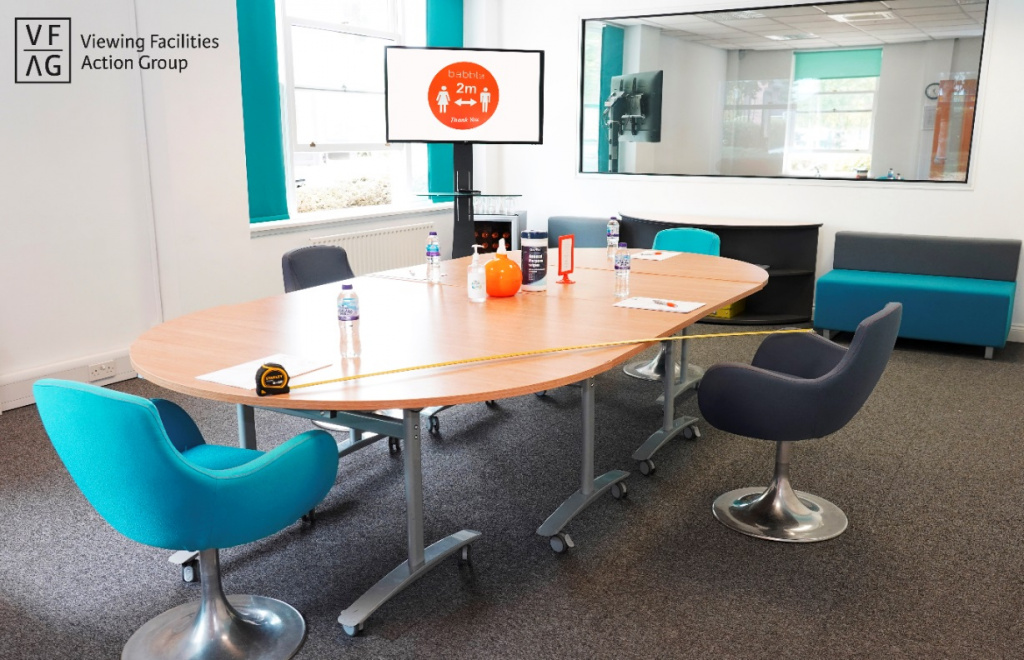
With so many clients shifting to Online methodologies, what do you see as the future for Viewing Facilities?
While it’s obvious that we’re going to advocate for the benefits of research conducted in Viewing Facilities, the reality is that the online platforms that many of our clients turned to in the early stages of the pandemic, have enabled many of them to continue with their work, which can only be a good thing for the industry as a whole.
What’s been interesting for us, is some of the feedback we’ve heard from clients. While an online interview can provide a direct window into a participant’s home and the way that they live, there can be limitations if the research includes a number of participants. Moderators frequently talk about the energy of in-person group discussions, where ideas are created, tested or challenged and how that can illicit unexpected insights. Viewing facilities provide greater opportunities for those dynamic exercises and spur of the moment activities.
They also offer support for their clients; with highly experienced staff ready to help with any problems or last-minute issues. This is not something that can always be replicated in a virtual space. But it doesn’t need to be an either/or question. Viewing facilities are an integral part of the research industry and online face-to-face will just become another tool that researchers use as part of their repertoire.
The future for viewing facilities is combining new methodologies with what we have always done best – providing the environment for people, products and ideas to interact.
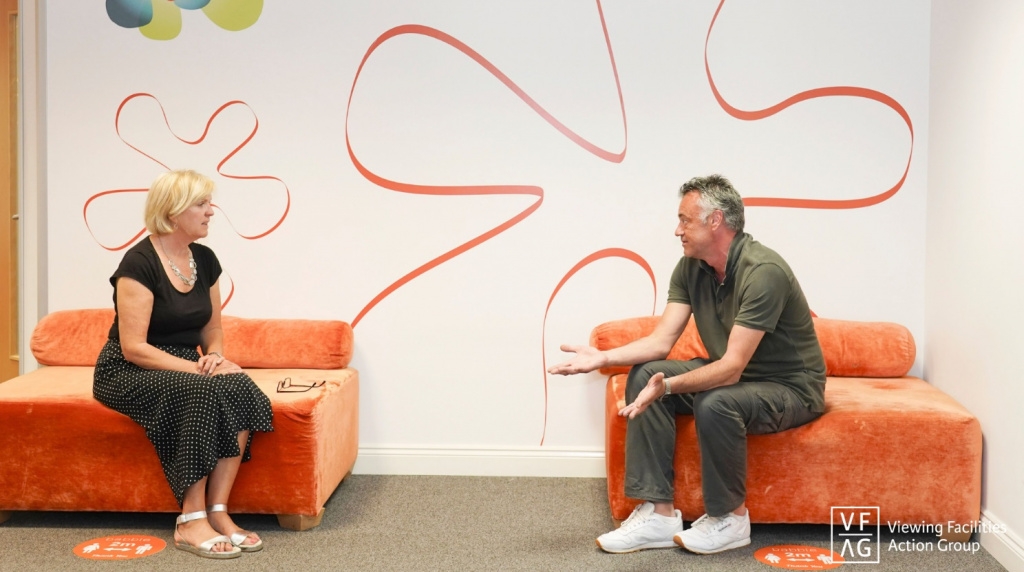
Gareth Dyson of Aspect Studios in Manchester & Stockport puts it very well when he says: “When ‘good enough’ is simply ‘not enough’”:
I think we need to firstly acknowledge that online methodologies have kept many of our clients afloat during the past 12 months and have certainly provided benefits in terms of reaching communities whose voices are rarely included due to geography. I also think we should acknowledge that the lockdown forced a large proportion of the population to rapidly upskill due to a need to connect with family and loved ones. That tech savviness shouldn’t be lost.
But in acknowledging these benefits we also have to recognise that many in the research industry turned to online portals, not because they represented a sea change in our industry, but because they were ‘good enough’ at that time. For everyone involved in market research that’s a pretty low bar.
The reality is that market research is much more than a conversation or a series of enquiries. We invite people to viewing facilities because they are neutral spaces where all attendees are taken out of their normal day-to-day lives to think about their habits, beliefs and behaviours. Researchers similarly focus as much on subconscious cues and mannerisms as they do on what’s being said. Online simply does not allow for that as it is merely a head and shoulders view on a participant or a group. And with varying degrees of connectivity/tech failure it limits something which I know many moderators prize above many other things; the dynamic of bringing together disparate members of the public, often with contrasting views, in order to elicit a range of views which can be turned into actionable insights.
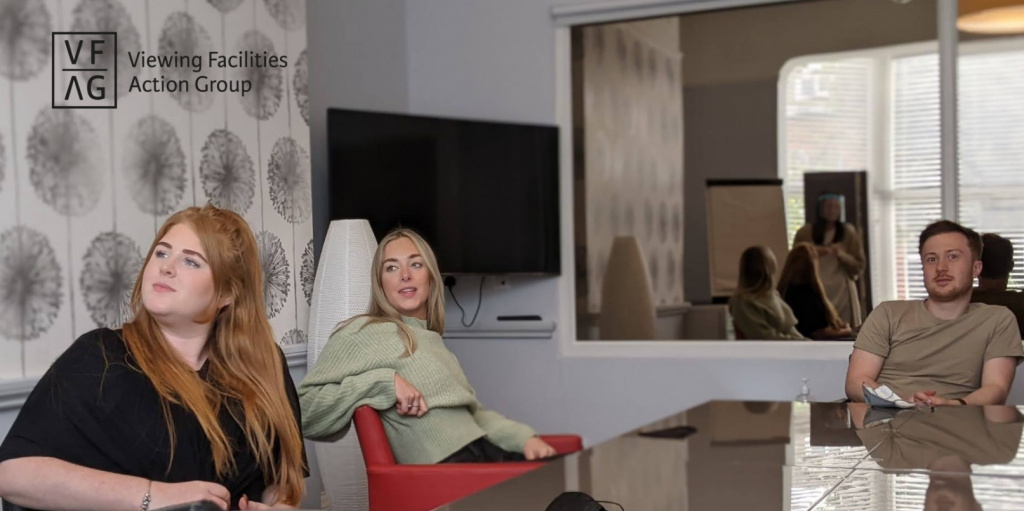
And Alexandra Coleman of Made In Studios in Birmingham: “We miss the buzz of the viewing facility.”
What do we mean by buzz? Well, let us explain.
It’s a Tuesday evening and after hours upon hours of briefing calls, screener creation and launch, recruitment, facility bookings, briefs, plans for the report and product development- it’s time.
You arrive to the facility and there are 8 friendly faces having a natter in the waiting room already. A warm welcome from us, and everything is in good hands. Your product is sat on a boardroom table, surrounded by drinks and biscuits- comforts for your respondents to ease openness. You can’t wait to show this lovely thing you’ve all worked on, but you’re a little nervous. It’s OK. Totally normal. Your clients are in the back room, checking out the mini fridges and discussing best practice for the group incoming. There’s always one person eyeing up the food menu in advance. “Do I have my incentives? NDAs? Consent forms? Respondent sheets? Discussion guide? Stim? Recordings? Ah…. The viewing facility has everything in hand.” Time for a quick, comforting tea. Back room lights off, recordings on, time to go.
The group commences.
They loved it! The colours might need a bit of tweaking- but it’s a green light. “That was fantastic!” you hear from the viewing lounge. A job well done. A thank you to your colleagues and the staff at the studios, and a beer on the train home, mind buzzing as you type up your thoughts.
This is our bread and butter. At viewing facilities across the UK, we love making great things happen. We have contributed to nameless products, services, and ideas for decades.
And we can’t wait to be back in full swing again, supporting you with your projects!
Viewing Facilities Action Group includes:
- Aspect Studios Manchester & Stockport
- Babble
- Engine Rooms
- Glasgow View
- i-view London & Leeds
- Made in Studios
- Midlands on view
- Reflections
- Schlesinger Group
- Spectrum London & Leeds
- The Front Room
- The Qualitative Lab
- Wyoming Studios